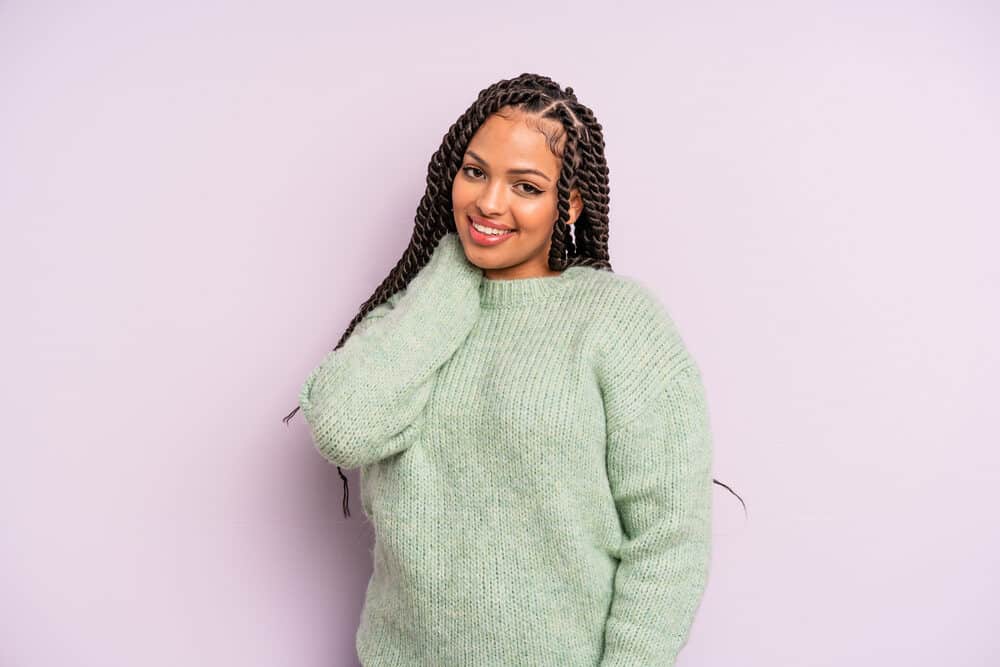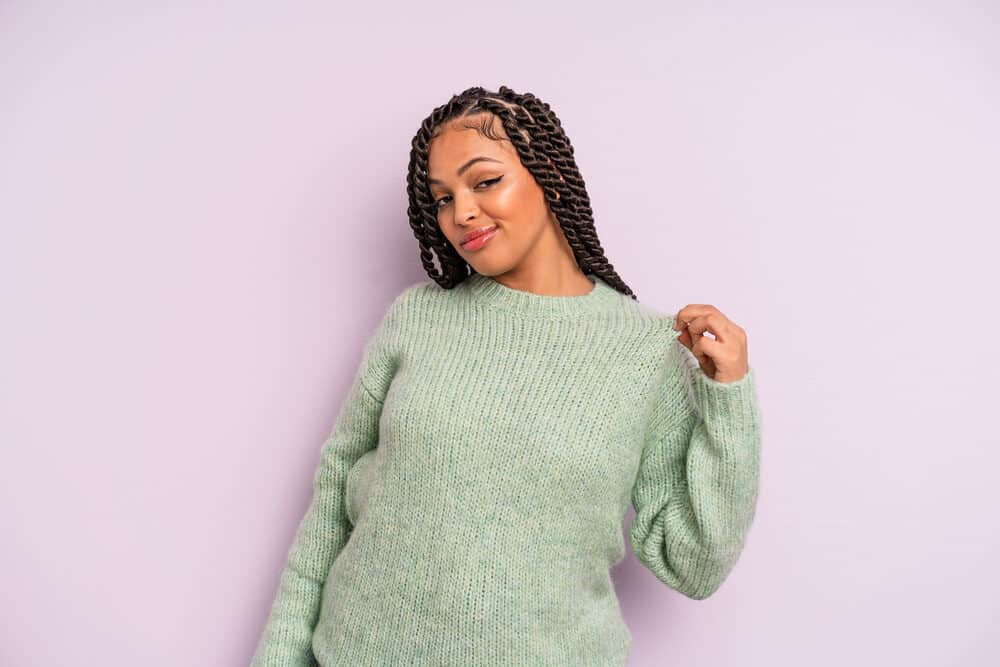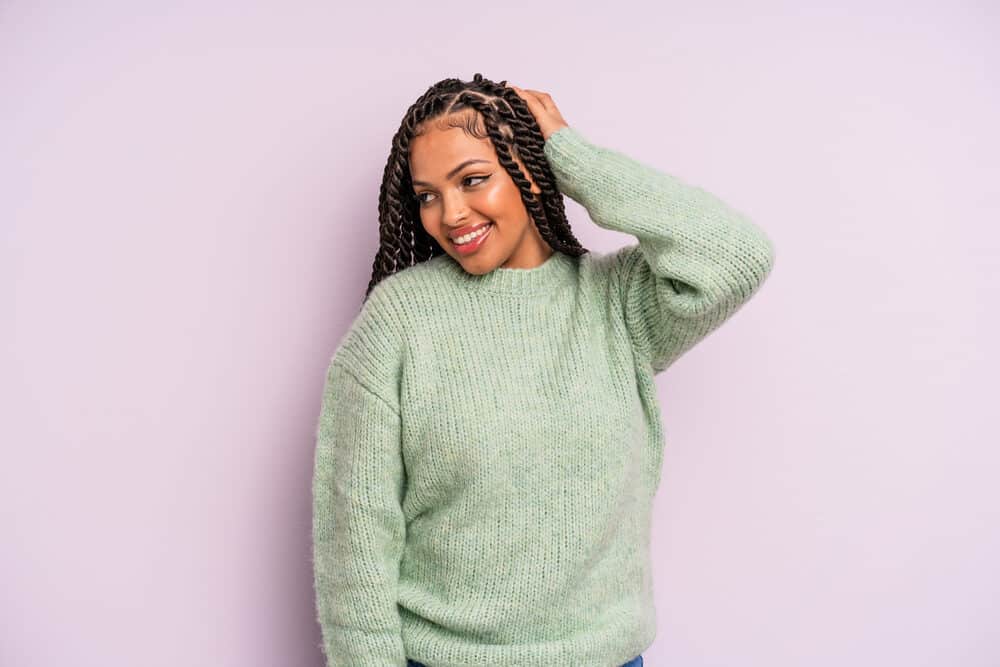
Today’s Mexican women are known for their luscious, glossy dark hair and gorgeous hairstyles. Chances are you’ve seen them rock long flowy looks, short edgy dos, and even braids!
If you’re wondering whether braids are a part of Mexican culture, keep reading!
This article will look at Mexico's rich tradition of hairstyles and explore the role braids play in the culture. We’ll also dive into some recent controversies surrounding the subject - you don’t want to miss this.
Table of Contents
Are Braids Part of Mexican Culture?
Yes, braids are a part of Mexican culture. From ancient Mexican tribes to modern-day times, Mexican braids are extremely common in the culture.
Both Mexican men and women have worn braids, and they have become an integral component of traditional Mexican art. Most Mexican women had long, flowing hair that would get in their way as they spent most days outdoors.
In addition, Mexico has a notoriously hot climate that ranges from arid deserts to tropical rainforests. Braids were a practical way for Mexicans to secure their hair and keep themselves from getting overheated.

Traditional Mexican Braided Hairstyles
While the hairstyles worn by modern-day Mexican women vary, a few braided styles have been cultural staples since ancient times. As you’ll soon see, traditional Mexican hairstyles were all about combining practicality with functionality.
Here are some conventional braided styles that were regularly worn by Mexican people in the past.
Single Braid
One of the most common ways traditional Mexican women wore their hair was in a single, long braid that fell down the back.
This simple look was considered a staple and is still worn by many women today. It's also versatile and can be worn by women with thin or thick hair. Sometimes, ladies will even weave colorful ribbons or flower hair clips throughout the length of the braids.
Double Braids
Another frequently worn hairstyle among Mexican women was double braids. They would first part their hair straight down the middle of the head.
Then, they braided the hair on both sides into a long, neat plait. Like the single braid, ribbons or flowers were often interwoven into the braids to add a pop of color.
Chingons
Chignons are buns that women did on either loose or braided hair. Their hair was gathered and twisted into a bun that they would wear at either the base of the neck or on the top of the head.
The braid would be wound into a figure 8 and secured with hair clips for a more intricate style. They then decorated the buns with flowers or colorful ribbons.
You've witnessed chignons if you’ve ever seen the sci-fi classic Star Wars.
Princess Leia’s iconic side buns were inspired by a hairstyle worn by Mexican female revolutionaries. George Lucas wanted Princess Leia’s hair to represent strength and independence.
He tried to avoid the damsel in distress trope, so he pulled from images of strong, Mexican women. While Lucas himself credited the Mexican revolutionaries, known as soldaderas, historians believe the style came from the Hopi women.
The Hopis were a tribe located in what is now known as Arizona.
The women often wore buns on both sides of the head in a style modeled after squash blossoms. Either way, Mexican women are behind one of the most famous hairstyles in American cinema.
Crown Braids
This regal hairstyle was popularized by the famous Mexican artist Frida Kahlo. Crown braids start just like double braids. First, your hair is parted straight down the middle, and the hair on either side is braided.
Then, the braids are wrapped around the head to form a halo and secured in place.
Like the other styles we’ve mentioned, crown braids were often decorated with brightly colored flowers or ribbons to create a totally stunning appearance.

Did Ancient Mexicans Wear Braids?
Modern Mexicans are primarily descended from European colonizers and ancient native peoples. Ancient Mexican society is generally broken down into five major civilizations: the Aztecs, Mayans, Teotihuacan's, Toltecs, and Olmecs.
Unfortunately, a lack of written history and archeological evidence means we don’t know much about the hairstyles worn in these ancient societies.

The Mayans and Aztecs
We know the most about Mayans and Aztecs out of all the ancient Mexican civilizations. Both societies used hairstyles to show a person's status and specify which tribe they were a part of.
Hairstyles were also a sign of one’s occupation. Priests, for example, would take a vow never to cut their hair. Instead, they would allow it to grow long and get matted.
Aztec women generally wore their hair loose but braided it for special occasions. On the other hand, Mayans have a rich history of braided hairstyles.
Upper-class women would braid their hair into intricate patterns and decorate the style with ornaments and ribbons on special occasions.

Spiritual Significance
According to many Native tribes, hair is closely tied to a person's spiritual life energy. As such, some hairstyles took on symbolic meaning.
One of the most prominent spirituality-based braided styles was the scalp lock. A warrior’s head was shaved until only a tuft of hair remained on the crown to complete the look.
The remaining hair was then braided or allowed to form a matted dread. In some tribes, the braid would be stiffened with animal fat or paint and sculpted into a shape that resembled a horn.
If anyone touched or otherwise disturbed the scalp lock, it could be taken as a sign of grave disrespect. When a warrior fell in battle, the scalp lock would be cut off and taken as a war trophy.

Mexican Hairstyles Today
While traditional braided styles are still prevalent, some Mexican women shake off tradition and experiment with different dos. Here are some of the hairstyles worn by modern Mexican women.
- Short cuts - Traditionally, Mexican women wore their hair long. Today, some women have taken to lopping off their locks as a political statement against gender norms.
- Colored strands - While Mexican women are known for their lush, dark strands, some women embrace color and choose to go lighter.
- Loose and straight - Although loose hair is still somewhat impractical, the relative comfort of modern-day life has allowed more women than ever to let their strands fly free.

Are Mexican Braids Cultural Appropriation?
When cultural braids come up today, it is usually a conversation about cultural appropriation. Braids themselves are not cultural appropriation.
They have been a part of cultures worldwide, spanning back millennia. However, the question of cultural appropriation usually pops up with hairstyles that are unique to the African ancestry.
Box Braids and Cornrows
It’s also important to differentiate between braids and braided styles. Traditional Mexican braids don’t include styles like box braids and cornrows.
Therefore, some people may consider it cultural appropriation when those styles are worn by Mexicans who don’t have African heritage. If you want to err on the side of caution, stick with braided styles unique to your cultural heritage.
Related Article: Box Braids vs. Cornrows

Can Mexicans Wear Braids?
You are free to express yourself with whatever hairstyle you like, but you should always try to respect and acknowledge the communities that created the styles you are recreating.
While cultural exchange in an increasingly globalized world is a beautiful thing, it can sometimes come at the expense of marginalized groups.
Black women are continually shamed and discriminated against for hairstyles deemed edgy or cool when worn by people from different backgrounds.
In particular, braids and dreadlocks have been at the center of the controversy as black women continue fighting for equality.
Cultural appropriation is a complex and polarizing subject, but the main takeaway should be that everyone deserves respect and to have their voices heard.
- Are Thai Braids a Thing?
- Can Latinas Wear Box Braids?
- Can You Get Waves if You’re White?
- Did Dreadlocks Come From Vikings?
As cultures continue to grow and intermingle, conversations surrounding cultural appropriation will continue to evolve.
In the meantime, we hope this article has helped shed some light on the role of braids in Mexican culture. Although the specific styles may vary, braids have been and will likely always be an essential part of Mexican culture.




